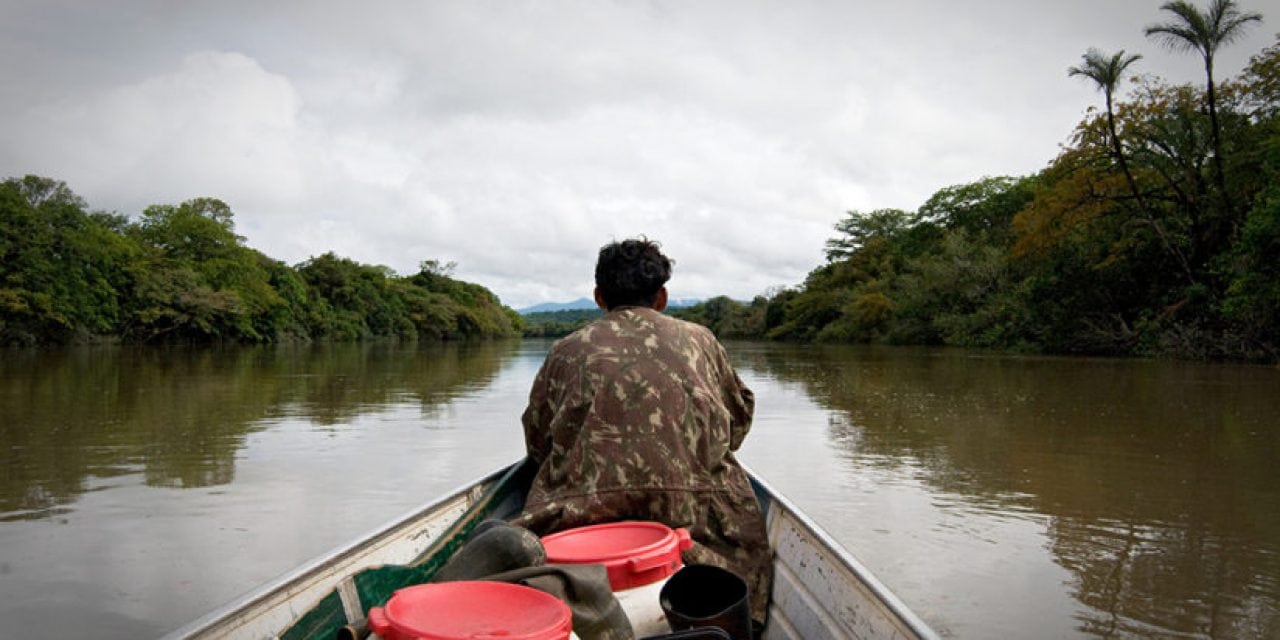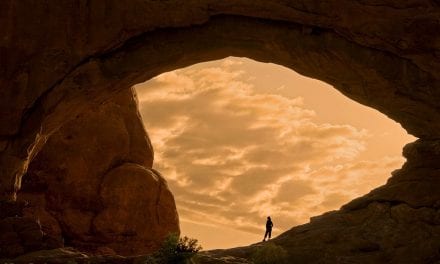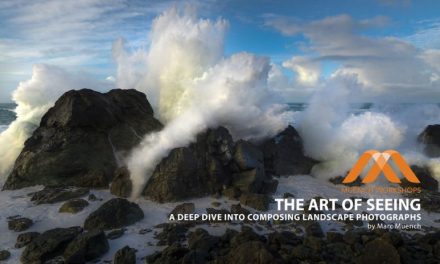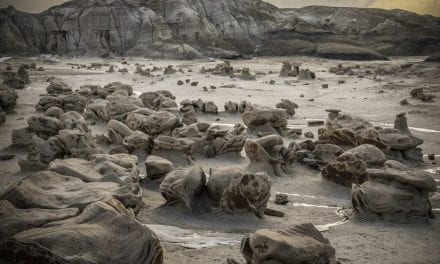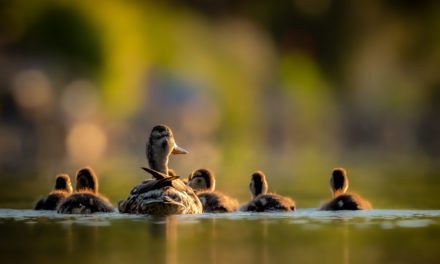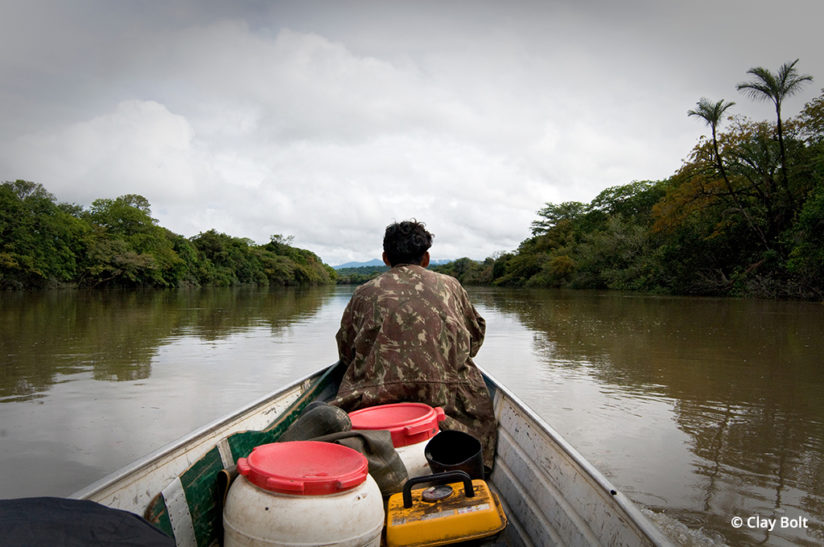
As I hung my hammock near the muddy banks of the Rupununi River, I thought back across the many months of preparation that had led to this moment. For nearly two years, biologist Andrew Snyder and I had been dreaming about this expedition to search for and photograph rarely seen amphibians within the Kanuku Mountains, one of the world’s oldest mountain ranges, located deep within the South American country of Guyana.
I paused after stowing away the last of my gear and peered up into the low roof of the abandoned hut in which we’d slung our hammocks. Within the thatch, I was able to just make out the outline of an arrow and a worn macaw feather that had been anchored there by the previous tenant. It was a surreal sensation, and in that moment the long days of travel by plane, truck and boat began to fade away along with the last rays the setting sun. I stood still, taking in the roars of the howler monkeys and the realization that I’d finally made it to the Amazon.
Since this experience several years ago, I’ve traveled to other countries in Latin America and have learned a lot along the way. I’ve seen breath-taking beauty, experienced amazing culture and mostly avoided food-borne illnesses. Nature and wildlife photographers are drawn in flocks to this part of the world to photograph its abundance of species and habitats, but if you’ve never traveled there before, it can be intimidating. However, with the right planning and preparation, traveling to many of its most amazing destinations can be quite easy.
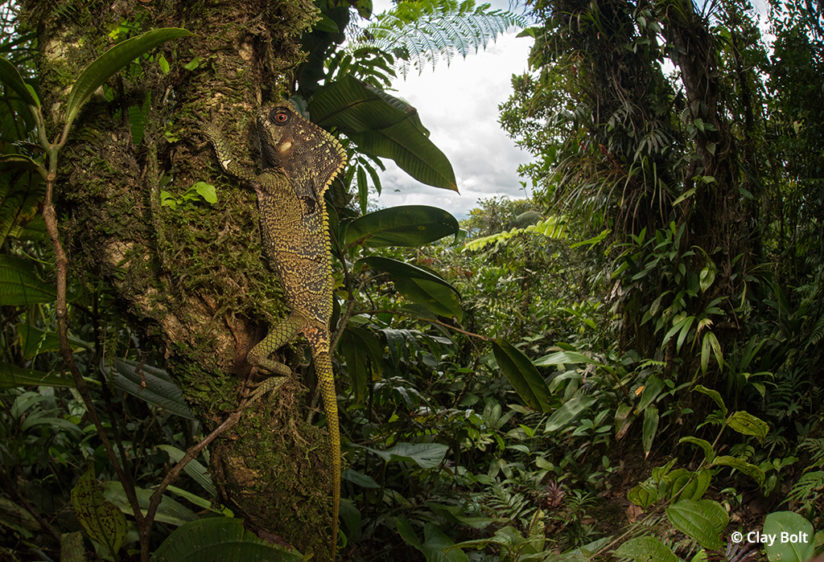
I’d like to share several of my favorite pointers for improving your opportunities for a successful trip to Latin America. While it is important to remember that every one of its countries is unique, here are a few guidelines that have made my own experiences easier and more enjoyable.
Good Guides Give Good Guidance
Visitors to exotic locations generally seem to be divided into two categories: those who want the luxury vacation, and those who fantasize about really roughing it. However, more and more, travelers such as nature photographers and birders seek something in between. They want to experience beautiful nature coupled with the comfort of falling asleep each night in a cozy bed after a delicious dinner and a couple of mojitos. I’ll be the first to admit that, while I really enjoy physically putting myself to the test in places that are well off the beaten path, there is something really wonderful about visiting an eco-lodge that offers the total package with premium wildlife experiences.
Many first-time travelers to the tropics are under the false impression that an abundance of wildlife means an abundance of wildlife sightings. Unfortunately, in a rainforest habitat this is rarely the case. Wildlife often doesn’t want to be seen or can’t be seen due to dense vegetation. Many species are nocturnal, which means that you’ll need to set out on a night hike if you’d like to see them. This can put inexperienced tropical explorers at the risk of run-ins with dicey terrain and venomous snakes.
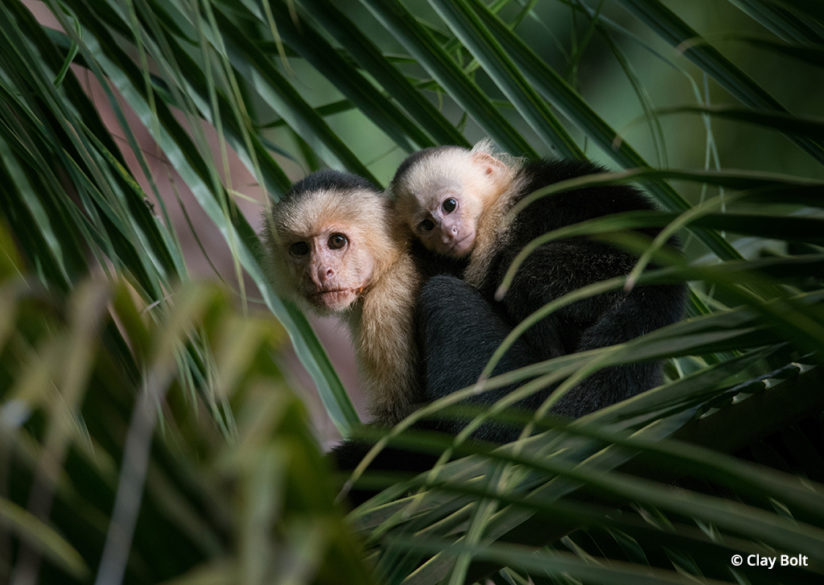
I highly recommend that you check out wonderful eco-lodges such as Bosque del Cabo Rainforest Lodge in Costa Rica’s Osa Peninsula, or Ecuador’s Mashpi Lodge. Both locations feature incredible forests, great staff and amazing accommodations. In addition, lodges such as these also have their own guides who can take you out on hikes and point out wildlife that you might not see otherwise. For travelers on a very slim budget, this might not be an affordable option. If this sounds like you, look for working vacations where you can volunteer to help with conservation projects for room and board. No matter where you choose to go, be sure to read as many customer or participant reviews as possible. It is easy to be lured in by a flashy website, but traveling to these locations isn’t always easy, and there is nothing more disappointing than being stuck in a place that doesn’t deliver.
Other options that I highly recommend are wildlife photography tours and workshops with experienced guides. Photographers such as Roy Toft and Suzi Eszterhas offer amazing tours to locations where you’re nearly guaranteed to see a stunning array of species. In addition, I specifically mention these photographers because I know that they care deeply about the wellbeing of the species that you’ll be photographing. There are a lot of guides who try to cut corners and treat the wildlife only as props, so choose carefully. You’ll feel better about your photos and you’ll come home knowing that you haven’t harmed these precious places or their inhabitants.
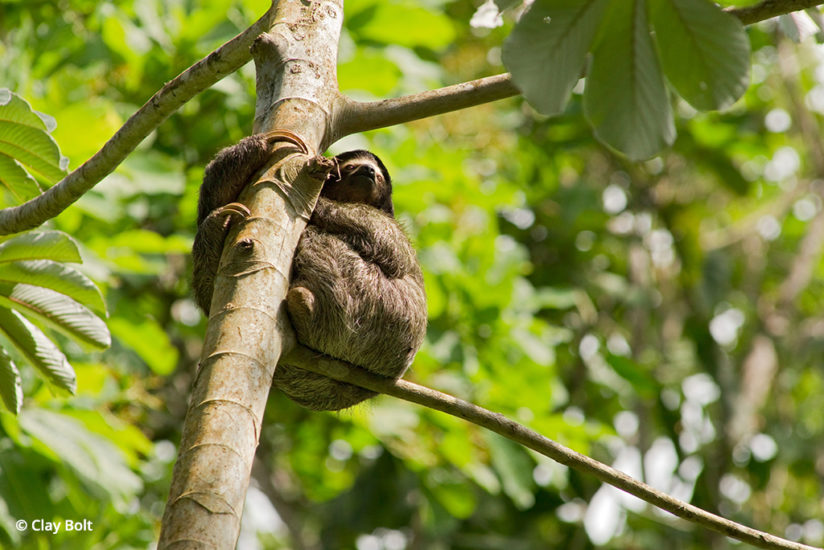
A Little “Hola” Goes A Long Way
I’m just going to say it: One of my pet peeves is to hear Americans and other foreigners in Latin American countries treating locals like second class citizens. I have been amazed by how many travelers don’t even attempt to speak even simple greetings or polite responses such as please and thank you. As a result, I have learned that travelers who make an attempt at speaking the native language are often treated with extra kindness. In my experience, native Spanish speakers are particularly patient with those who try to speak their language, and if you do so, you may find that you’ll not only have the opportunity to meet new friends but also witness some extra-special things. Many times I have been at places where a guide or kitchen hand who I’ve gotten to know will run up and say “perezoso” (sloth) or “culebra” (snake). A little effort goes a very long way. Your new friends won’t expect you to be fluent, but demonstrating that you’ve taken the time to learn a few words can help so much, especially if you find yourself in a situation where you’re in desperate need of the kindness of strangers.
If you’re interested in learning a little Spanish, Portuguese or French before a trip to Latin America, YouTube has a tremendous amount of free online resources. If you’re more serious about your studies, many excellent teachers offer courses via Skype and other online platforms. My personal favorite is Spanishland School, which can be found on YouTube, Facebook or via their website. They also offer two great podcasts.
Another useful option for brushing up on speaking with native Spanish speakers prior to your trip is the free website conversationexchange.com. This site connects you with people learning your native language. I have met some wonderful friends via this site with whom I practice Spanish a regular basis, and it has made a tremendous difference in my own learning experience. You don’t have to speak perfectly; you just have to do your best. And hey, it will be cute when you say things like, “I’ll have the soap sandwich, please.”
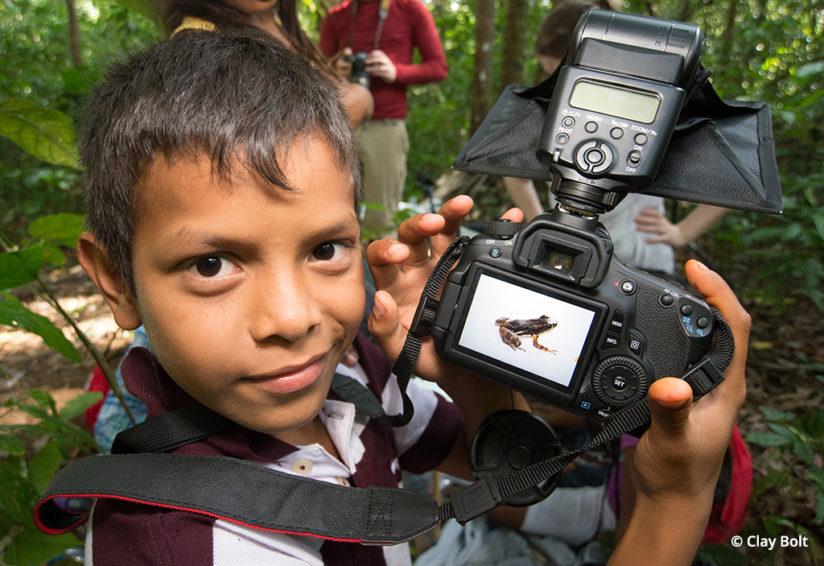
TechnoLingual
While we are on the subject of speaking, there are several apps that can really help you out while you’re traveling in Latin America. WhatsApp is a free app that is extremely popular in many countries outside of the U.S. It functions very much like Facebook Messenger. Many areas in Latin America don’t have great cell signal, so WiFi in cafes and other public spaces allows people to send messages and make calls for free.
Another great tool is Google Translate, which makes it easier to communicate in many different languages. It also has the ability to use your phone’s camera to translate printed words in the language of your choice. Although it isn’t always 100 percent accurate, it usually translates things well enough for you to understand.
Not-On-Time Traveler
One thing that I adore about Latin America is the relaxed pace of life. Also, one of the things that sometimes really frustrates me about Latin America is the relaxed pace of life. I really appreciate the laid-back pace that you’ll find in many Latin American countries, but I’d recommend that you accept that promptness isn’t always going to be at the top of everyone’s list. Things often happen in their own time, and this is fine as long as you’ve given yourself plenty of space between flight connections, bus travel and other time-sensitive events. Rather than stressing about it, plan accordingly, drink a cerveza or strong coffee while you wait, practice your Spanish and chill out. The main thing to remember is that eventually you will get to your destination, so just go with the flow. Pura vida, baby!
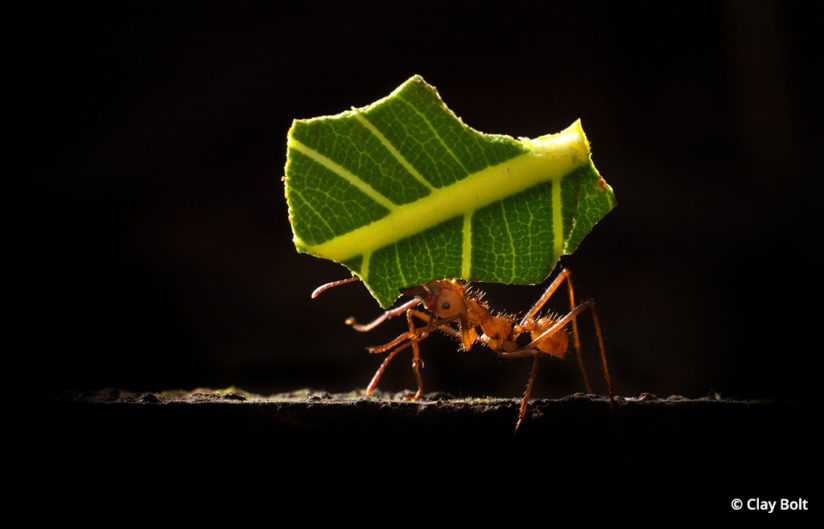
Oh, The Humidity Of It All
As a native of the Southeastern U.S., I love humidity, and now that I live in Montana, it is one thing that I really miss. Humidity represents biodiversity to me; frogs, salamanders, wildflowers and insects all thrive in humidity.
However, humidity in the tropics is another story all together, and even more so for photographers. Personally, it isn’t the way that it affects my body but the way that it affects my camera gear that’s a challenge. If you’ve ever found yourself traveling within the equatorial regions of the world, then you won’t be surprised to hear that during the dry season it can still rain hard every single day. This means fogged lenses, and fogged lenses mean you’re either going to cry when you miss that opportunity to photograph the jaguar taking a nap on your path or you’re going to embrace the fact that you’ll be making some very artsy photos until the fogging goes away.
Either way, save yourself some heartache by bringing along two very essential items: a dry bag that can hold your most important gear and a ton of desiccant packs. For the most part, I’ve been very lucky with fogging, but there was one particular trip to Panama that I dropped not one but two cameras and a flash into a river. Talk about depressing. Fortunately, because I had desiccant and dry bags with me, I was able to save all of my gear.
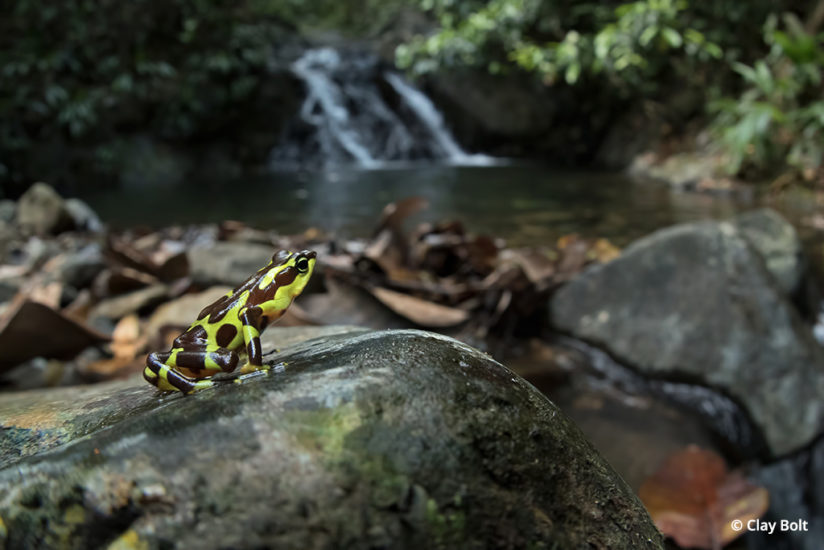
Even when you aren’t a klutz like me, constant exposure to humidity can slowly build moisture in your lenses and cause your electronics to do weird things. These very inexpensive purchases can save you a ton of money in the long run. Oh, and along these lines, be sure to insure your gear before you travel to the tropics, and bring along a portable hard drive to store your photos. I’ve had students in my workshops who have been devastated to discover that their photos, which were all stored on a single memory card, have been deleted.
Don’t Be So Flashy
In all my years of travel, I’ve been fortunate to have never had any issues with theft. Truth be told, I’ve had many more issues as a result of getting excited about some bug that I’ve seen and running off after it without half of my gear.
However, traveling in any big city or unfamiliar place requires a certain degree of awareness. Central and South America are no different. For example, don’t walk around with a spellbound expression on your face and your expensive camera out for all to see. You’re going to make yourself into an easy target. Also, be careful when taking photos with your expensive iPhone. They are also easy to grab and are often the targets of thieves in crowded areas such as markets.
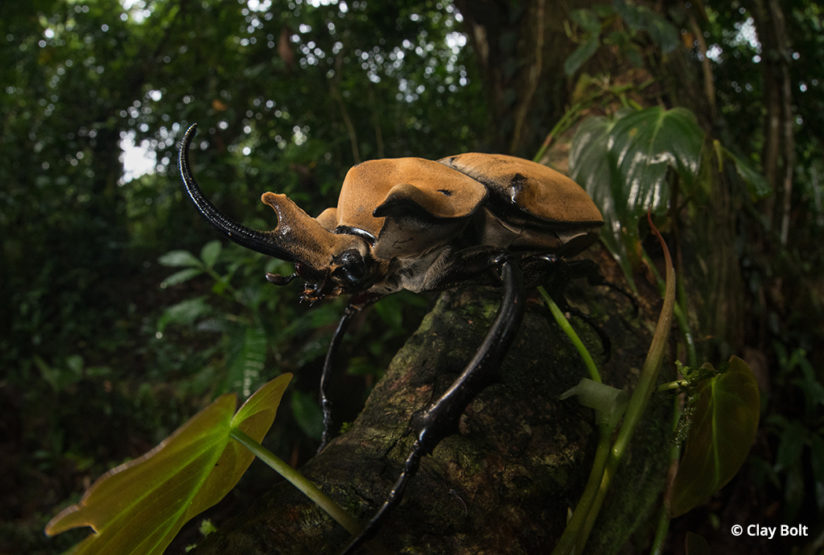
If you use some common sense, you don’t have any more to worry about in unfamiliar places than you do in metropolitan areas around the world. Also, I’d highly recommend that you don’t wear white socks with sandals and shorts. I’m not sure that it increases the chances of theft, but the fashion police might take you away.
¡Vamos!
At the end of the day, traveling in Latin America can be an amazing, life-changing experience. The people are warm, the food is incredible and the nature can’t be beat. Just remember to plan very carefully before you travel and let things flow once you arrive at your destination. Everything may not go exactly as you’d expected, but that can lead to some of those wonderful unplanned opportunities that make traveling such a joy.
YOU MIGHT ALSO LIKE
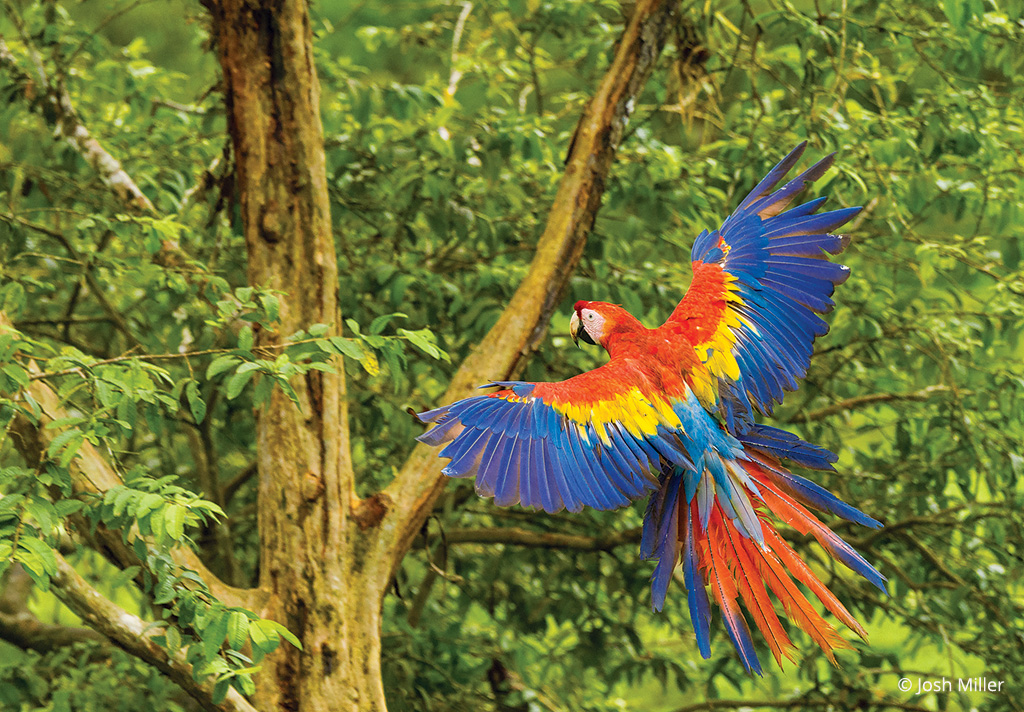
South For The Winter
Winter in the northern hemisphere is the perfect time of year to escape to Costa Rica’s photo opportunities. Read now.
The post Te Amo, Latin America appeared first on Outdoor Photographer.

